Flowers that Bloom in India During the Monsoon or Rainy Season
India has a rich tapestry of year-round flourishing flora because of its distinct temperature and terrain. But the monsoon season—June to September—brings a unique brightness to the environment since so many flowers blossom in reaction to the extra rainfall and chilly weather. During this season, which is frequently marked by copious amounts of rain and an abundance of foliage, certain flowers reach their peak of beauty. Here, we look at a few of the most exquisite and noteworthy flowers that bloom in India during the monsoon or rainy season.
1. Hibiscus (Rosa-sinensis)
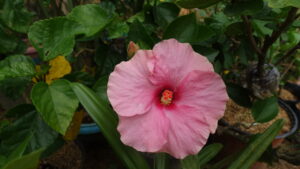
The hibiscus, often referred to as the China rose or shoe flower, is a vivid and striking flower that grows best during the monsoon season. These big, trumpet-shaped blooms are colored red, pink, yellow, and white, among other hues. Hibiscus blossoms are vital in Indian culture and are frequently utilized in religious offerings and traditional medicine, in addition to their aesthetic appeal.
In addition to needing lots of sunlight and well-drained soil, hibiscus plants also require a lot of water, which is why the monsoon season is perfect for their growth. The flower is a popular in gardens all throughout India because of its profusion of blooms during the rainy season.
2. Lotus (Nelumbo nucifera)
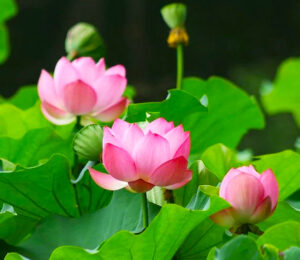
In Indian culture and spirituality, the lotus flower is strongly symbolic of riches, enlightenment, purity, and beauty. Abundant in bloom during the monsoon season when water bodies are refilled, this aquatic flower grows best in quiet, shallow waters.
Large, fragrant blossoms that emerge in the morning and shut by afternoon are the hallmark of lotus flowers, which are usually pink or white in color. They are not only beautiful to look at, but they are also very important ecologically since they give many aquatic creatures a place to live and food.
3. Gulmohar (Regia delonix)
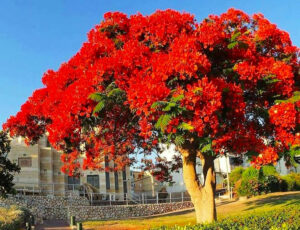
The brilliant red or orange flowers of the Gulmohar, often called the Flame Tree or Royal Poinciana, are well-known for producing a breathtaking show during the monsoon season. This tree, which is native to Madagascar but is now commonly planted in India, stands out in any environment thanks to its expansive and vivid blossom canopy.
Due to their preference for tropical and subtropical settings with lots of sunshine and water, gulmohar trees blossom best during the Indian monsoon season. In addition to offering shade, they enhance the visual appeal of both urban and rural environments.
4. Zephyranthes, the Rain Lily

It is no coincidence that rain lilies bloom during periods of intense rain. These tiny, star-shaped flowers are available in yellow, pink, and white hues. Despite their modest size, they have a big impression when they bloom in great quantities and cover the ground in brilliant hues.
Rain lilies are hardy and adaptable, growing in most types of soil, however their preferred environment is well-drained. They are frequently used to offer a pop of color to gardens and landscaping projects during the rainy season.
5. Cassia (Cassia siamea), the monsoon

Another stunning flower that blossoms during the rainy season is the Monsoon Cassia, often referred to as the Kassod Tree or Siamese Senna. Bright yellow flower clusters that contrast sharply with the green leaves are produced by this tree. In addition to being beautiful, the monsoon cassia is good for the environment since it aids in the soil’s ability to fix nitrogen.
Usually found in tropical and subtropical areas, these trees flourish throughout the monsoon season when they have an abundance of water. Because of their aesthetic appeal and ecological advantages, they are frequently planted in parks and along roadsides.
6. Indian Cork Tree (Millingtonia hortensis)

During the monsoon season, the Indian Cork Tree, sometimes called Tree Jasmine or Akash Neem, blooms abundantly with fragrant white blossoms. Particularly at night, these blooms, which hang in bunches, fill the air with a pleasant scent.
Because of its preference for well-drained soil and minimal watering, this tree grows best during the monsoon season. Because of its lovely blossoms and delightful scent, Indian cork trees are frequently planted in gardens and beside avenues.
7. Blue Morning Glory (Ipomoea indica)

Beautiful blue or purple trumpet-shaped blooms are produced by the climbing vine known as Blue Morning Glory. These flowers give the yard a magical touch when they bloom in the early morning and fade by the afternoon. Although they can grow in a variety of soil types and are resistant, morning glories need high moisture levels during the rainy season.
During the monsoon season, these vines are frequently utilized to cover buildings, trellises, and fences, producing a lush and vibrant spectacle.
8. Periwinkle (Catharanthus roseus)

A resilient plant that blooms all year round, periwinkle, sometimes called vinca or sadabahar, puts on an amazing display during the monsoon season. The flowers have five petals that resemble stars and come in a variety of hues, such as pink, white, and red.
Periwinkles are common in Indian gardens since they are low care and easy to cultivate. They are utilized in traditional medicine to treat a variety of illnesses and are also well-known for its therapeutic qualities.
9. Butterfly Pea (Clitoria ternatea)
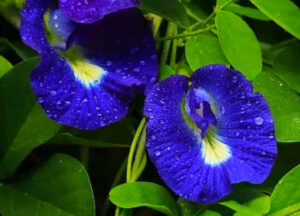
Climbing plants called Butterfly Peas have eye-catching blue or white blossoms that resemble butterflies. During the monsoon season, these flowers blossom profusely, bringing a burst of color to gardens and natural settings.
While they may grow in a variety of soil types, butterfly pea plants are best suited for wet, well-drained soils. In addition to being exquisite, flowers have long been utilized in traditional medicine and culinary arts due to their numerous health advantages.
10. Balsam (Impatiens balsamina)
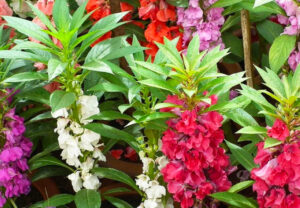
Balsam plants thrive best during the rainy season because they like damp, well-drained soils with partial to full sun. Due to their easy maintenance requirements and beautiful blossoms, they are frequently planted in gardens and as potted plants.
11. Tuberose (Polianthes tuberosa)

Although they need frequent watering and thrive best in well-drained soil with lots of sunlight, tuberoses are best grown during the rainy season. They are frequently utilized in religious rituals, perfumes, and beautiful landscaping.
12. Golden Trumpet (Allamanda cathartica)

Bright yellow trumpet-shaped blooms are produced by the tropical plant known as the Golden Trumpet, or Allamanda. Throughout the monsoon season, these flowers blossom copiously, enhancing the vibrancy of gardens and landscapes.
Rainy season is best for golden trumpet plants since they need lots of water to flourish, but they also like full sun and well-drained soil. They are frequently used as decorative plants in walls, fences, and gardens.
In India, the monsoon season is a time of beauty and regeneration as a variety of flowers blossom, enhancing the environment with color and scent. These flowers are important to the ecology and cultural traditions, in addition to adding aesthetic value to gardens and natural areas. Every flower adds its own special appeal and importance to the monsoon season, from the colorful Hibiscus and the revered Lotus to the fragrant Tuberose and the joyful Balsam.
This season is often anticipated by lovers of the outdoors and gardening since it is when these lovely flowers, which stand for the richness and rebirth that the rains bring, blossom. The flowers of India’s rainy season are a true gift from nature, symbolizing the diversity and harmony of life, whether for their aesthetic worth, ecological advantages, or cultural significance.


